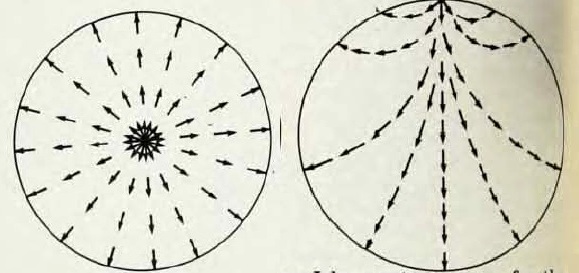博文
一个诗意的物理名词
 精选
精选
||
爱丽丝的“精神父亲”卡洛尔(Lewis Carroll)——作家喜欢说作品是他的mind son(如塞万提斯说堂吉诃德)——在童话诗The Hunting of Snark里说,有个怪物叫Boojum,假如有天我遇到它,肯定会在刹那间无声息地化得没影儿:if ever I meet with a Boojum, that day, in a moment, (of this I am sure), I shall softly and suddenly vanish away—and the notion I cannot endure! 我原来译它为“大白鲨”,一是为了好听,二是因为在Carroll的诗里,boojum是Snark的一种:小心啊,如果你遇到的鲨鱼是boojum,你就会在刹那间无声息地化得没影儿(But oh, beamish nephew, beware of the day, If your Snark be a Boojum! For then You will softly and suddenly vanish away)
boojum的标准特征就是softly and suddenly vanish away。
Sussex的物理学家B.K. Ridely在小书《时间空间和万物》(Time Space and Things, Penguin Books Ltd. 1976; Canto edition, 1995)里专门开了一章来说Boojum,告诫我们“在物理学中,除了台球、重子、黑洞和布朗运动,还有那可怕的大白鲨(Boojum)”,讲理论物理学的方法论问题,关于理论极限的问题。有一段话说“独特性”,读起来很有味儿:
For a start it must beware of unique things. A unique thing is a Boojum of devastating power. To make things difficult, each physicist is a unique human being, each experiment a unique operation carried out in a unique venue at a unique time under unique circumstances. If we want to communicate something about the uniqueness we had better write poetry or paint. If we want to communicate something that is timeless and true everywhere (maybe the experiment was a good one!) we have to get rid of the uniqueness.
“我们遭遇那恶魔,那大白鲨,是因为我们走得太远,远远超越了我们的理论赖以建立的经验范围的极限。”(原书不在了,根据我的后记的译文。)在我的印象里,这是第一次看见物理学家借Boojum来说事儿。作者(在后来的版本)加了一个注释说,低温物理好像也用Boojum来描述一种液氦现象,与这儿的意思是不同的。

The boojum in He3A, being a point at which anisotropy axes in different directions all meet, is a mathematical singularity. A singularity in He3-A responsible for the vanishing of a supercurrent had to be called a boojum.(这个词的中译名为“布经”,虽是兼顾了几何图像的音译,但已经没有任何令人想象的空间了。)
Ridley所说的液氦现象,是超流3He-A相,那个名字还真跟Sussex有缘。1976年,Sussex大学开会纪念超流3He-A相的发现。以前发现过4He超流(2.17K),它是Bose-Einstein凝聚;3He服从Feimi-Dirac统计,不会发生BE凝聚。但根据BCS超导理论,3He的电子可以形成Cooper对,这些对儿则可能像Bose子一样发生BE凝聚——1972年,人们终于发现了0.0027K的3He超流。3He超流有多个流相,其中3He-A相是各向异性的,角动量取向形成特殊的对称结构,其运动会使超流衰减。这种令超流衰减的特性,让康奈尔大学的N. David Mermin想到了Carroll的“softly and suddenly vanish away”,于是自然想用Boojum来描述那种奇异性。为让它成为正式的科学名词,Mermin费了好大的工夫。他写过一篇回忆,“物理学家也是语词发明家”(E Pluribus Boojum: the physicist as neologist. Physics Today 1981(4): 46)——题中的E Pluribus Boojum当然是从硬币上“抄”来的(E Pluribus Unum)——讲了一个曲折而有趣的故事。
他先是在会议讨论、报告和演讲里用Boojum,也有人赞同,可还没在期刊露脸。后来,胡家仁(Chia-Ren Hu)有篇文章“Exact Solution of a ‘Boojum’ Texture in He3-A”投Journal of Low Temperature Physics,可审稿人和主编都要他把题目里的boojum换成“适当的科学名词或短语”才能发表。胡老师把意见转给Mermin(他们也是在Sussex认识的),说准备改用SOSO(“singular on surface only”的缩写,即它的本义:超流面上的奇性)。这令Mermin着急了,他不能眼看boojum被soso取代,即刻给主编John G. Daunt写信,说那词儿在圈内已经用过一年多了,而且有几篇即将发表的文章也用它做题目,它也是Webster词典收录的,意思很好刻画了超流的特性……(In short, "boojum" has now been used in the field for a year as a technical term meaning, quite precisely, "any surface point singularity the motion of which can catalyze the decay of a supercurrent." The term is specific, apt, and recognized by Webster.)
令M吃惊的是,Daunt说他本人也参加过超流圈子的会,知道那词儿是怎么回事儿——不就是你一个人在吆喝么(carrying as it did the clear implication that he had seen through my bluff and bluster and knew as well as I did that all of my impressive array of published appearances of "boojum" were due to my authorship alone.)——我等着你的新词儿被国际认可的时候,但这会儿我们不能坏了本刊的规矩。幸运的是,Daunt也受不了那个讨厌的SOSO……(不知那篇文章最后用的什么。)
后来,M读到贝尔实验室的两个作者的一篇稿子,称那构形为boogum,M想应该纠正过来,于是去查Webster,又令他大惊了一回,原来boojum也可写成boogum:
boogum or boojum (perh. fr.boojum, an imaginary creature in The Hunting of the Snark by Lewis Carroll (C. S. Dodgson) 1898 Eng. mathematician & writer; fr its grotesque appearance): a spiny tree (Idria columnaris) of the family Fouquieriacea chiefly of Lower California, sometimes arching over and rooting at its tips.
……经过不大不小的曲折,1978年5月,Boojum终于出现在了PRL40(19)——

https://blog.sciencenet.cn/blog-279992-820998.html
上一篇:追寻爱因斯坦的风笛手(2)
下一篇:春江水暖鹅先知
全部作者的精选博文
- • 被拍卖的爱因斯坦方程
- • 彭罗斯的新物理狂想曲
- • 再说霍金彭罗斯
- • 彭老说黑洞
- • 314与137
- • 爱丽丝镜子里的时空奇点
全部作者的其他最新博文
- • 被拍卖的爱因斯坦方程
- • 彭罗斯的新物理狂想曲
- • 再说霍金彭罗斯
- • 永遇乐 辛丑元日还乡
- • 望海潮 元旦过锦江
- • 北京至成都过五城